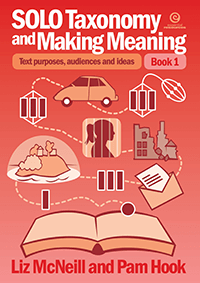
Free downloadable PDF: How to apply SOLO in the classroom
Implementing a model for growth mindset
How to Apply SOLO in the Classroom is a valuable free resource for educators looking to deepen their understanding of SOLO Taxonomy and its practical application.
This free PDF encourages educators to reflect on the why behind implementing SOLO, helping to ensure that its use is intentional and leads to meaningful and effective outcomes. By focusing on purposeful application, this resource empowers teachers to transform their classrooms into environments where students can thrive as independent learners.The reflective activities enable students to identify their current level of understanding, evaluate their learning outcomes and plan clear, actionable next steps to advance their learning journey.
Looking to learn more about SOLO Taxonomy? Check out First Steps with SOLO Taxonomy.
|
NZD incl GST
|
Add to cart | |
| or more | each |



